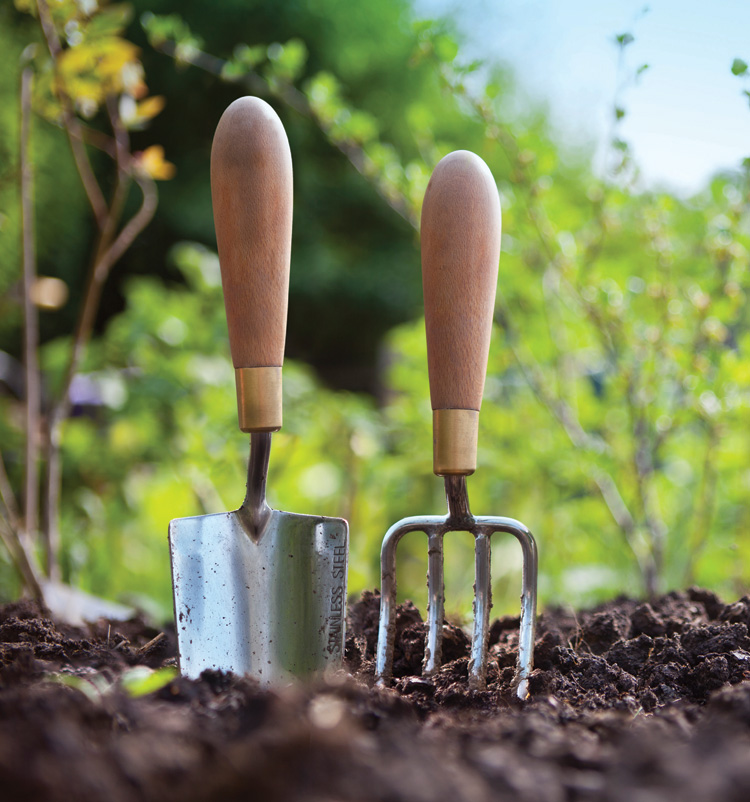The old adage that a workman is only as good as his tools makes a lot of sense. Tools leverage your labor, and choosing the right one for the job will save you time andPhotography provided by ©iStockphoto.com/cjp.effort when it comes to preparing and maintaining your
Whatever the tool, it will last longer and be more enjoyable to use if it’s well made; buying cheap, low-quality tools rarely pays off. Look for excellent workmanship and materials, including handles made of hardwood (preferably ash or hickory), a carbon or stainless-steel blade forged from a solid piece of metal, and a solid (rather than wrapped or welded) handle socket.
Before you buy anything, handle the tool to make sure it is a good size for you; petite people often find that tools scaled for children are more comfortable. It should be comfortable to use and not too heavy or too light.
THE RIGHT TOOL FOR THE JOB
Using the right tool is key to successfully completing a project. For example, a four-tined pitchfork makes moving mulch much easier than using a shovel. A long-handled shovel is the best tool for digging deep, round holes; a short-handled spade with a square blade is best for digging trenches, edging, and other applications where a straight, square cut is desired.
Rakes can be designed for different tasks. A leaf rake is made from flexible metal, bamboo, or plastic tines, and fans out to collect the leaves. A bow rake has short, rigid metal tines for smoothing or scratching up the soil surface. The narrow design of a shrub rake makes it ideal for reaching into tight spaces.
CARING FOR YOUR TOOLS
Tools will last longer, look better, and be a greater pleasure to use if you look after them properly. Dedicate a little time at the end of the gardening season to service your tools. Once a year, preferably just before winter, wipe the wooden handles of all your garden tools with warmed linseed oil to prevent them from becoming brittle and splitting.
A sharp shovel or spade edge will cut through dirt and plant matter more easily than a dull one. To sharpen, clamp the spade in a vice so it is horizontal to the ground, or lay it on the ground with the blade facing away from you. Push a file or abrasive stone forward along the inside edge of the blade in even passes. Lift the file at the end of each sweep so you always move it in the same direction. Follow the angle of the existing blade as a guide (or a 45-degree angle if the bevel is too worn to tell). Because a shovel is a single-beveled tool, do not sharpen the opposite side of the edge. About one-eighth inch of the blade will be visibly shiny after sharpening.
To prolong the life of your pruning tools, clean the blades and lubricate the moving joints and springs at the end of the season. To prevent rust, finish the overwintering job by spraying all the metal parts with penetrating oil.
Electric and gas-powered rotary lawn mowers need servicing once a year. The oil should be changed to protect the engine from undue wear, the spark plugs checked, the oil filter cleaned, and the blade cleaned and sharpened or replaced. The owner’s manual will provide detailed directions for your specific model. If you decide to have the job done professionally, take your machine into the shop in winter to avoid the spring backlog.
WRITTEN BY CATRIONA TUDOR ERLER

